Wildlife gardening - introduction
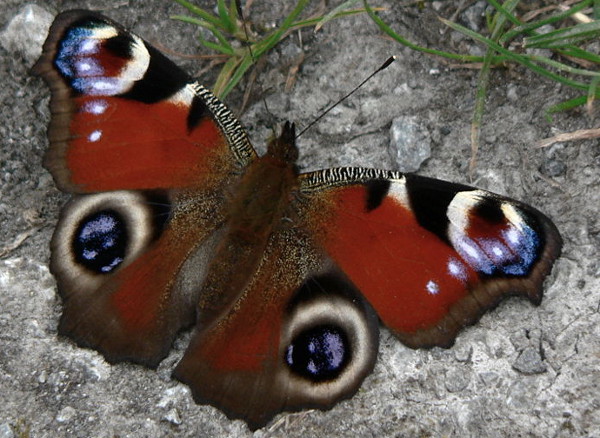
“A garden is a love song; a duet between a human being and Mother Nature.” – Jeff Cox
Contents
What is wildlife gardening?
We should clear something up straight away – gardening for wildlife is not the same as letting your garden go wild! Wildlife gardening is about keeping wildlife always in mind, and using any space you have to create habitat and grow plants that benefit and encourage it. Your garden will still need tending and maintaining, just in a different way. It doesn’t have to mean completely redesigning what you already have in an all-or-nothing approach.
Small areas of grass left to grow a little longer, hedge-bottoms with protective leaves and vegetation, herbaceous borders left untrimmed over winter – all these things can provide valuable habitat for life. Even if you only have a small yard space or balcony, container gardens and bird feeders can attract a surprising amount of visitors.

In the 1940s and 50s, wildlife and gardens went hand in hand. However the 60s saw a change in the way people thought about their gardens. Nature was something that happened in the countryside, and the introduction of pesticides and herbicides instantly made gardens more sterile. This ‘fashion’ continued for a couple of decades, until naturalist and TV presenter Chris Baines wrote How To Make A Wildlife Garden in 1985. This book was hugely popular and influential – and still is. Suddenly wildlife gardening was legitimate, a proper subject, a thing of value. Over the intervening 30 years it has gained in popularity and now the idea of encouraging nature is widespread, especially with the rise of popular programmes like Springwatch.

What are the benefits of wildlife gardening?
Wildlife gardens are beautiful and infinitely fascinating, providing interest all year round. There’s lots of evidence to show humans need a connection to nature and the seasons for a true sense of well-being, so having wildlife in mind and in sight enhances quality of life. And having nature close at hand for children is invaluable education; all kids seem fascinated with wildlife, especially getting their hands in the soil and looking at creepy crawlies.

Loss of habitat is a major problem affecting Britain’s animal population, so a welcoming garden can act as a wildlife refuge, to a certain extent. However even with the best intentions there are still problems to be aware of. For example, with urban plots being very private and fenced off, unless you cut small fence holes at ground level, hedgehogs cannot roam from place to place looking for food or a mate (see ‘hedgehog street‘).

Pollinators are key to the reproduction of some plants, and a bountiful harvest in others. Encouraging pollinators (bees, butterflies, hoverflies etc.) pays great dividends to your own garden, especially if you’re growing food. Hoverflies and ladybirds are especially good at eating aphids, again a great benefit for food growers who often otherwise suffer from pests like blackfly.
What can I do?
Rule number one – do not use pesticides or herbicides. Insects have a vital place in the ecological web; killing them indiscriminately breaks the chain and deprives other animals of food.
You don’t need to be a bird-nerd to experience feathered friends at close quarters – all you need is a window and a stick-on suction bird feeder.
Create a wildlife pond. Half the UK’s ponds have disappeared in the last hundred years. By adding one to your garden you can benefit a huge range of creatures including frogs, newts, dragonflies, birds, bats and hedgehogs. This remains one of the most popular nature-related activities in the UK.
Plant lots of flowers in the veg garden as they bring in the beneficial invertebrates e.g. English marigold or nasturtium for predatory insects (which will feed on aphids / blackfly) and borage or poached egg plant for pollinators.
Leave a patch of unmown grass for a few weeks. This will encourage shrews, and shrews eat slugs.
Create a wildlife meadow. Although grass is the most important element, this isn’t about just stopping mowing. You need to research and sow flowers most appropriate to your own soil type and conditions.

Window boxes and containers can be used to grow plants with many uses – e.g. chives and other herbs, to eat and to also attract butterflies; nasturtium for edible flowers and bumble bees, lavender for aromatic, culinary and medicinal use.
Provide nectar plants for butterflies e.g. greater knapweed, Verbena bonariensis, borage, foxglove of any type, buddleia (preferably the variety ‘Lochinch’).
Provide a nest box for birds. Blue or great tits are most likely to make a box their home.
Become a beekeeper! Seldom will you find a more passionate and welcoming bunch of people than your local beekeeping group.

Create an open compost heap, or leave a small pile of branches and leaves on the ground. These will provide a natural place for hedgehogs to nest and attract their staple food insects, without costing any money.
Buy a ready-made red mason bee home. We advise ready-made in this instance because the tubes need to be an exact diameter and free of splinters for this bee to enter.
Plant shrubs which produce winter berries for birds e.g. hawthorn, holly, rowan, ivy, pyracanthus.
Leave the dead plants in your herbaceous border intact over winter, providing precious hibernation space for all sorts of invertebrates.
Plant night-scented flowers and put up boxes to attract bats, then watch for them at dusk.

A quick list of things to be aware of:
Bat numbers have declined alarmingly over the years as pesticides poison their food source and there are less roosting sites. They have a lot of protection in law which means if you have bats, you might be restricted in what you can do with your roof.
It is illegal to handle great-crested newts. They too are protected by law and you need a license to deal with them.
Certain berries (e.g. yew, or more accurately, the seed inside the berry – the flesh of the berry is edible as long as you don’t eat the seed); flowers (e.g. foxglove); and bulbs (e.g. daffodil) are poisonous so always remember to tell a child or complete novice not to put things in their mouth without being told they are safe.
Shop-bought bug hotels are widely available but are often not fit for purpose. Firstly many of the hollow sticks are hollow all the way through (pointless if the insect is climbing inside for shelter), secondly the diameter of the hole often needs to be very specific and thirdly, often the sticks have splinters, which will put insects off. A log pile in a damp spot is often just as good, and free.

As a final note, it’s worth mentioning that cats spell very bad news for native wildlife. In fact the Mammal Society recently published a report saying they’re responsible for killing nearly 300 million birds, mammals and amphibians per year – a ‘considerable cause for concern’ as they put it. We’re not suggesting you get rid of beloved Fluffykins, but neither could we leave this important bit of information unsaid. But if you do have a cat, it’s important to have it neutered to prevent unwanted kittens.
Specialist(s)
Thanks to Jenny Steel of Wildlife Gardening for information.
The specialist(s) below will respond to queries on this topic. Please comment in the box at the bottom of the page.

Jenny Steel has a degree in Applied Biology and a master’s degree in Plant Ecology from Oxford University. She is the author of seventeen books on wildlife gardening and wildflower gardening. She lives in South Shropshire where she has a two acre wildlife garden. She is a freelance writer for organisations, magazines and Wildlife Trusts. Her wildlife gardening information website can be found at www.wildlife-gardening.co.uk.

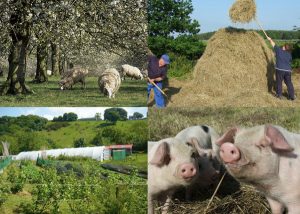
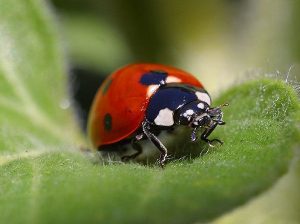
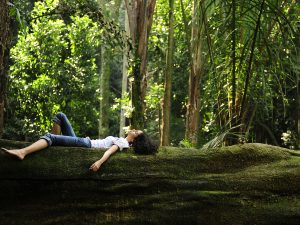
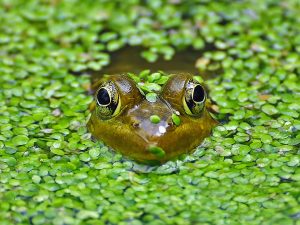
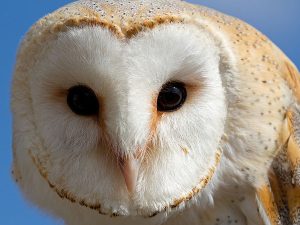
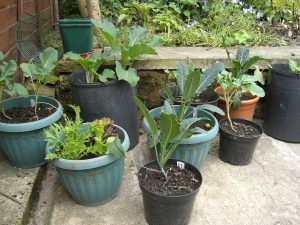
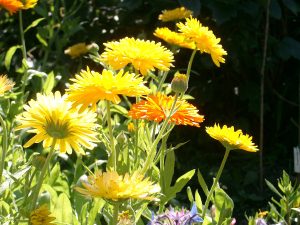
4 Comments
I am a kid who manages a small allotment in zone 8b (USDA) I’m leaving the plot behind in June and would like to establish some harvests and a wildlife habitat we have clay soil, I currently pIan planning on using the greenhouse and cold frames to grow early veggies (summer or spring harvests) there is a 4 ft by 2ft area of joe Pyle weed near the canal and a 8 by 10 ft area of (mostly perennial) wildflowers we have a magnolia and a big cedar with only one bush underneath. Unfortunately I do not have access to a nursery so I would need to g ow the plants from ( I hate to say it) Amazon. Please give me some advice as to how I should proceed.
Christopher – our advisor is a specialist in UK ecology so can’t help I’m afraid. Maybe someone else will post something helpful. Sorry.
I like that you clarified how wildlife gardening focuses on creating habitat and growing plants that benefit and attract wildlife while always keeping that species in mind. You added that your garden will still require care and upkeep, only in a different way, and it doesn’t necessarily require a whole overhaul of what you already have in an all-or-nothing strategy. My mother-in-law’s been thinking about getting a potted wildlife for a while now to start her journey on gardening so I’ll send her this for inspiration; thanks so much! https://www.evergreennurserymi.net/potted-trees
I volunteer at a permaculture garden in the grounds of a council owned retirement home. We are just starting to build a sensory garden for the residents but want it to be as wildlife friendly as possible. Can you suggest any hardy tall perennial grasses we could use to border the garden so that we have the sound of them in the summer?